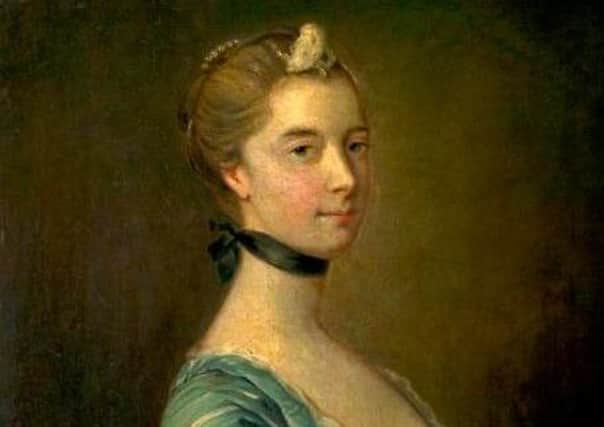Bonnie Prince Charlie meets his Glaswegian mistress


It was a move that was to cross the Prince’s path with one of the loves of his life, Glaswegian Clementina Walkinshaw, who was later to mother his daughter, Charlotte.
Charles arrived in the Stirling area on January 4 1746, first stopping at Kilsyth House and then Bannockburn House, the home of Jacobite ally Sir Hugh Paterson which was to become the temporary headquarters of the ‘45 rebellion.
Advertisement
Hide AdAdvertisement
Hide AdIt was here that the Prince was to spend long periods of time with Clementina, daughter of textile merchant, Walkinshaw of Barrowfield, who founded the weaving village of Calton.
A niece of Sir Hugh and one of 10 sisters, Clementina was one of the ladies assigned to care for the Prince, even tending to him with cinnamon possets when the Young Pretender fell ill with a dose of flu and fever.
Some claim that Clementina, who was raised in-part on the Continent, first met the Prince while staying at Shawfield Mansion, home to merchant James Glassford, during the festive season with a second meeting then arranged at Bannockburn for the New Year.
What is known is that a week after Charles arrived at Bannockburn House, he and Clementina were lovers, according to Bonnie Prince Charlie in Love, by Hugh Douglas, published by the History Press last year.
Diaries presented by Clementina’s daughter, Charlotte, laid before Louis XV and XVI state “categorically” that she was presented to him at Bannockburn, Douglas said.
She was also referred to as his “mistress” by Dr William King of Oxford, a Jacobite leader south of the border, with Lord Elcho, a Scottish Jacobite officer, claiming the pair met at Bannockburn House.
Charles was to leave Bannockburn for the siege of Stirling, with the city surrendering on January 8 but the castle remaining outwith Jacobite hold, and the successful Battle of Falkirk Muir on January 17.
Advertisement
Hide AdAdvertisement
Hide AdHe was to return to Bannockburn House on Sunday, January 19, where he was nursed for a “fluish cold accompanied by a high fever” with Clementina in place to care for him.
Douglas said Clementina was “on hand with cinammon possets and sympathy” for the Prince, who was struggling to deal with internal fighting and strategy at the time.
Douglas added: “She and her friends at Bannockburn helped him to forget his troubles so successfully that he even missed a meeting he had arranged with Lord George Murray.”
Lord George was effectively the Jacobite army’s commander-in-chief at the time.
The Prince left Bannockburn House on February 1 1746 with Clementine later to follow Charles to the Continent.
Their daughter, Charlotte, was born to Charles and Clementina at Liège in October 1753 but his mistress was to later flee the Prince in fear of her life.
A letter she left behind said: “Your Royal Highness cannot be surprised when you consider the repeated bad treatment I met with these eight years past and the daily risk of losing my life.”
Advertisement
Hide AdAdvertisement
Hide AdMother and daughter went to live in a convent, the pair supported by an annual pension from the royal household of King James III and VIII.
Charles married Princess Louise of Stolberg-Gedern in 1772 and continued to refuse to make provision for his daughter and her mother.
Meanwhile, it is claimed he went on to become a violent, scarlet-faced boor who frittered his family fortune on “legions of prostitutes”, according to Bonnie Prince Charlie: Truth or Lies, by Roderick Graham.
With the prince’s wine intake upping to six bottles a day, and sometimes a bottle or two of brandy, his growing bulk caused painful sores on his legs, Graham said.
That marriage ended abruptly in November 1780, when he attacked Louise, attempted to rape her and tore out chunks of her hair.
It was only after the marriage had ended that he took an interest in his daughter. In 1783 he wrote a new will in which he made Charlotte his heir.
He granted his daughter the title of Duchess of Albany in the Scottish peerage.
Advertisement
Hide AdAdvertisement
Hide AdAn act of legitimation for Charlotte was also signed which allowed her to inherit his properties in France.
Father and daughter ended up living together in Florence with her later named a Knight of the Order of The Thistle. Charlotte died in 1789 of liver cancer, just a year after her father.
Clementina, meanwhile, outlived both of them and died in 1802 in Switzerland. Her last few years were spent in relative comfort given she had inherited handsomely from her daughter.
